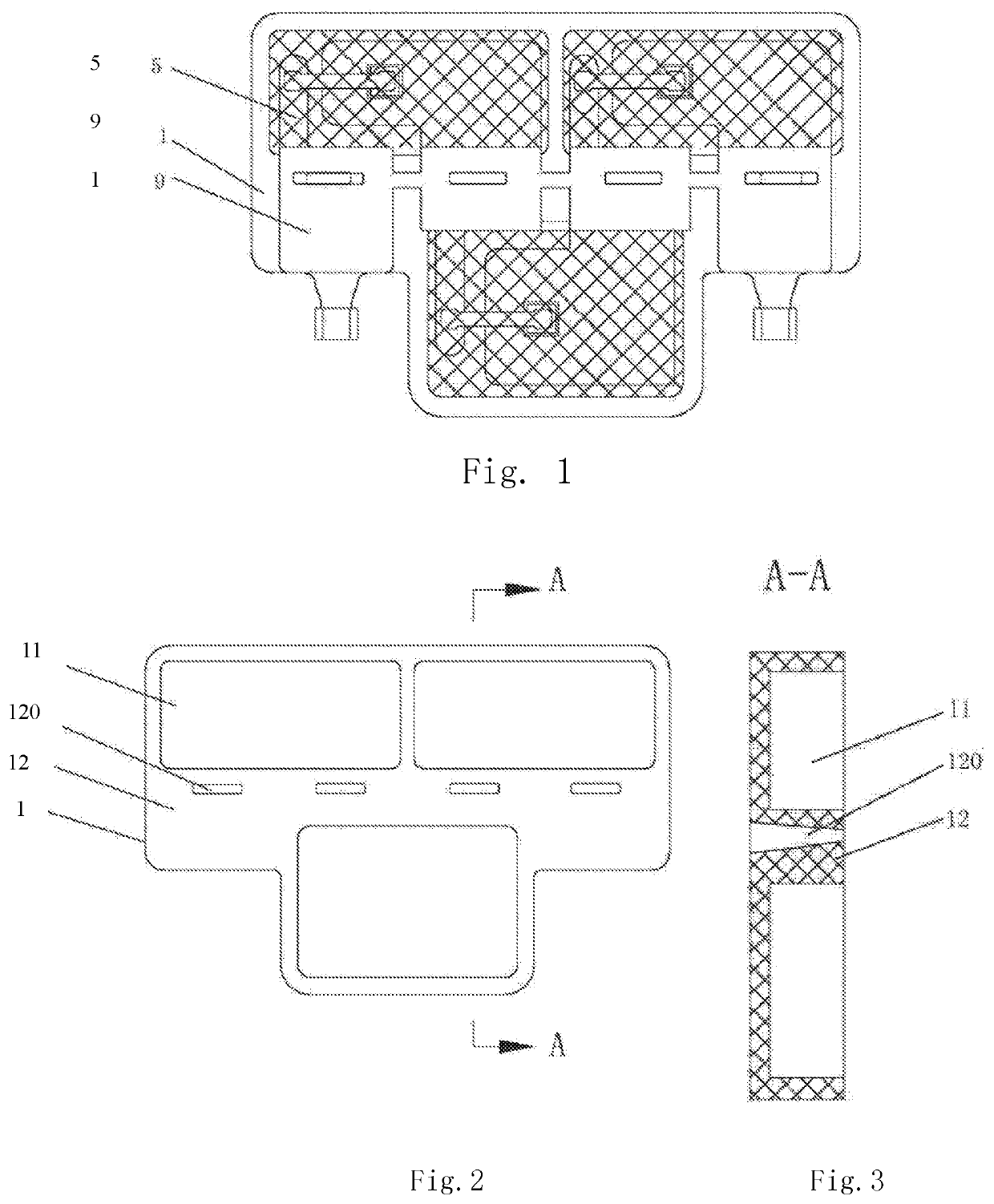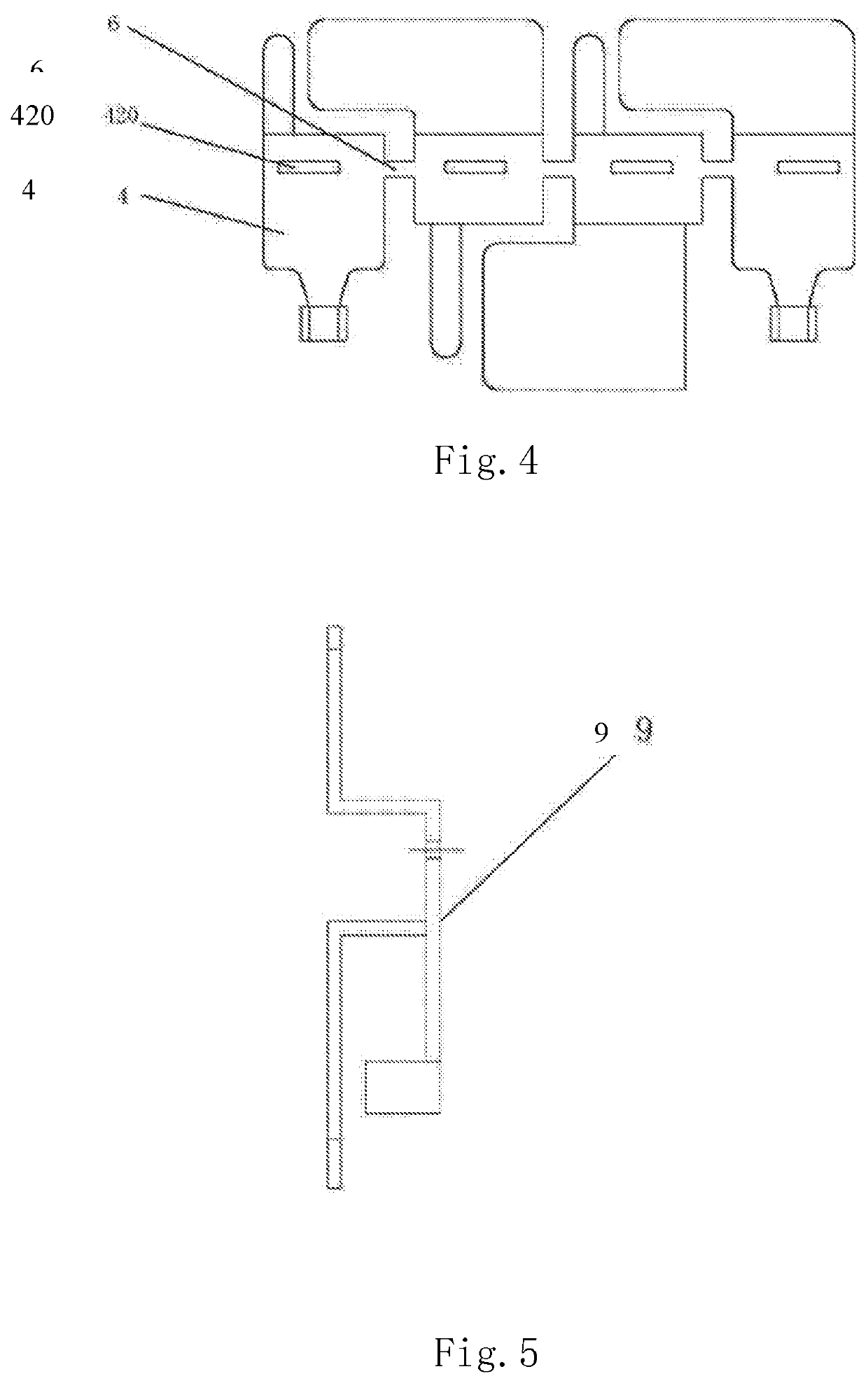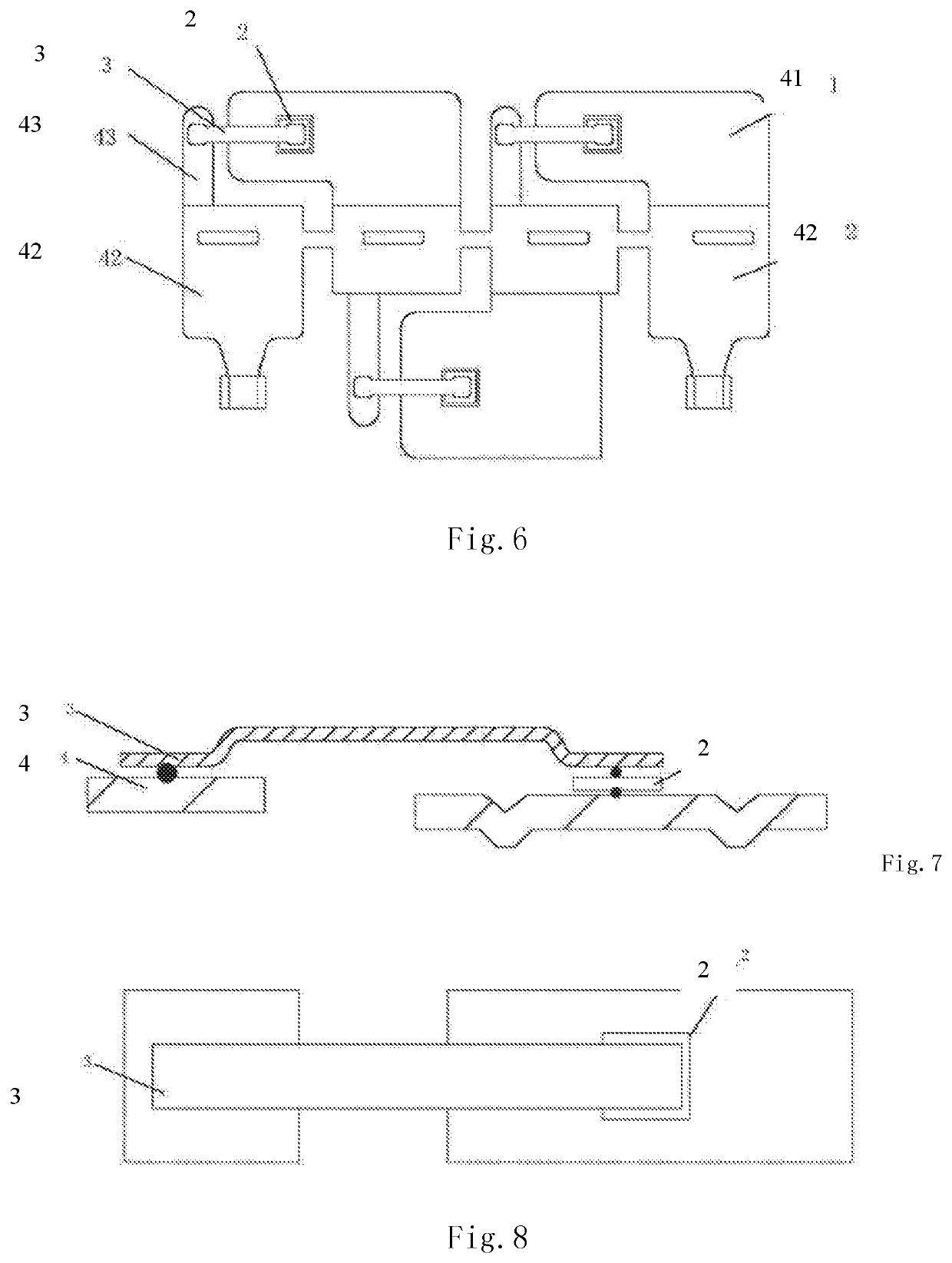Other power generation assemblies connected to the
silicon cell in series generate power normally under
irradiation of
sunlight and current passing the
cell in a resistance state will generate large heat, burning down the
cell and backing sheet of the assembly.
Therefore, the manufacturing and installation processes of the junction box have many steps and are labor consuming.
Junction boxes produced in the known art meet with difficulty in solving problems about sealing performance, temperature rise and internal
gas expansion.
However, in terms of structure and application requirements, the module is fixed inside a junction box still by mounting method,
sealant still needs to be filled in the inner chamber of the box body after the solar power assembly manufacturer installs the junction box into a power generation assembly, and the product does not have obvious advantages in production and application.
As a result, the limited heat dissipation space inside the junction box cannot be effectively utilized, thus limiting the passing capacity of working current.
Complex production equipment is required in the production and application of junction boxes to achieve automatic assembly.
1. Most photovoltaic module products adopt an ultrasonic aluminum wire
wedge bonding process as shown in FIG. 35. An
ultrasonic bonding tool 10 is used to connect aluminum wires to
diode chips and photovoltaic modules. This method has two problems. The first, all photovoltaic diodes adopt Schottky process chips. PN junction of a
diode in this process is located under a surface
aluminum metal layer of the chip. The
ultrasonic bonding stress will act on the
diode chip. If the pressure and amplitude are large, it is prone to damaging the PN junction and affecting the service life of the product, while if they are small, it is prone to false connection. Therefore, very expensive
process equipment needs to be used to meet
process requirements and realize stability; the second, as aluminum wires are used as a
welding material and inferior to copper and silver in terms of electric
conductivity and
thermal conductivity, the
voltage drop of the photovoltaic module product is high and during work, the photovoltaic module product shows
high heat generation, large
power consumption and poor heat dissipation.
2. A process of
high pressure injection is adopted, as shown in FIG. 36, to wrap a thermosetting resin material around a soldered chip. In this injection process, plastics driven by injection head is sprayed at an extremely high jet speed and pressure into the mold cavity, and directly acts upon the diode chip and the connecting aluminum strip, resulting in a compressive stress of the chip and a pull stress of the aluminum strip from the resin material. The
stress concentration in the
injection molding process causes deformation of the internal structure of the module, impairing the reliability of the module.
3. As a common practice among existing photovoltaic module products, three diode chips are distributed on one side of a
copper conductor and this side is sealed with a thermosetting resin material. When a hot spot effect is locally generated in a photovoltaic assembly, one or two of the chips will start working to generate heat. Owing to the
thermal conductivity of the external packaging material and the
copper conductor, temperature of heated chips will be quickly transferred to adjacent chips to raise temperature of the adjacent chips. On the moment, the local area of the photovoltaic assembly without a hot spot effect still generates power normally and its power generation
voltage reversely acts on the corresponding diode chips. Based on the high temperature characteristics of the
Schottky diode chips, the reverse leak current will increase. As the leak current will not be saturated, temperature of the PN junction of the chips will rise further. Hence the reverse leak current increases again, forming a vicious cycle of
heat generation of the diode chips. In a serious case, the
balance point is exceeded, the diode chips are broken down, and the photovoltaic module product loses effect.
4. In an existing photovoltaic module product, diode chips are put together and wrapped with thermosetting resin. In a working state, heat generated by the diode chips cannot be dissipated fast, restricting the working current of the junction box.
5. Junction boxes produced in the known art all have a process of secondary
machining of semiconductors: an individually packaged diode needs to be connected to a copper conductor by means of crimping or
reflow soldering; a photovoltaic module needs to be fixed and connected to a plastic tray inside a junction box body by means of push mounting; high temperature of
reflow soldering causes various expansions of different materials, which will affect
internal stress and compactness of devices; crimpling will make the devices be affected by
external pressure, causing plastic burst and
cracking of the photovoltaic module and potential quality
hazard from pressure;
6. Photovoltaic modules need high development cost and the corresponding relations with junction boxes are singular, unable to adapt to the development of j unction boxes. The requirements for installation match between the two are high, adding difficulty of development match between them.
 Login to View More
Login to View More  Login to View More
Login to View More 


